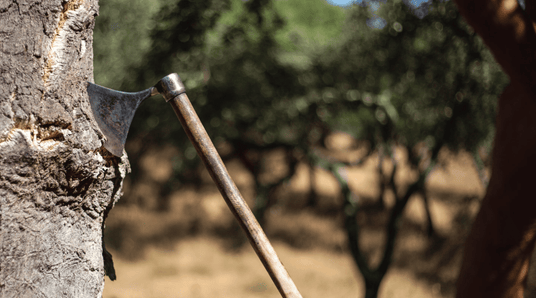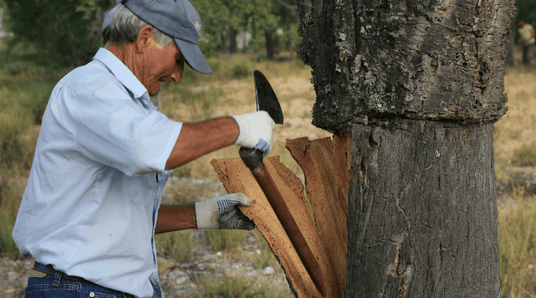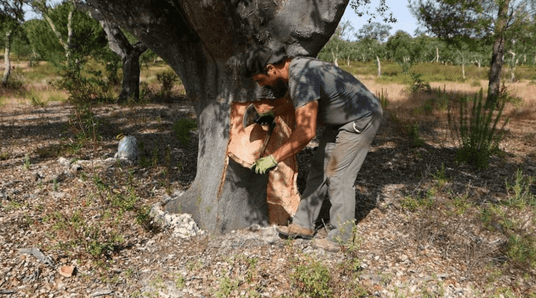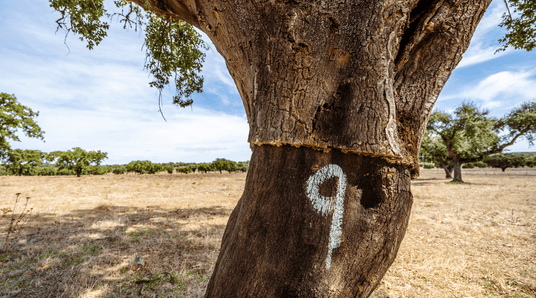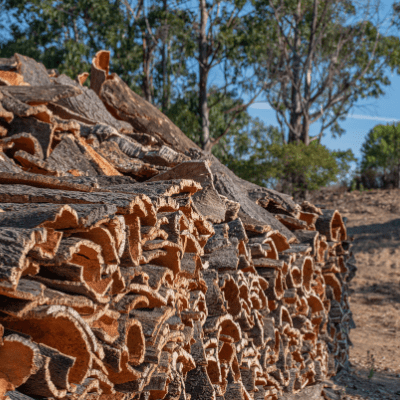Cork bark harvesting intertwines ancient tradition with sustainable innovation. For many generations cork was harvested by hands, using one single instrument - an axe, applying techniques that have been refined through centuries and handed down within families.
A cork oak trunk becomes profitable for cork production only after about 25 years. The first harvest, called "desbóia," yields irregular and hard cork, known as virgin cork, used for purposes like flooring and insulation. Nine years later, the second harvest produces secondary cork, still unsuitable for stoppers. It's only from the third harvest (at almost 45 years old!!!) onward that high-quality cork, known as "amadia" or reproduction cork, is obtained, with a regular structure suitable for quality stoppers. The cork oak then provides good quality cork every nine years for about 150 years, totaling around 16 bark harvests throughout its life. The tree is then replaced by a much younger one.
Harvesting cork is a delicate dance between human hands and nature's bounty. The harvesting of the cork oak is an ancient process that can only (and should) be done by experts: the descortiçadores. Manual skill and a lot of experience is required to avoid damaging the tree.
Cork harvesting is performed in six stages:

